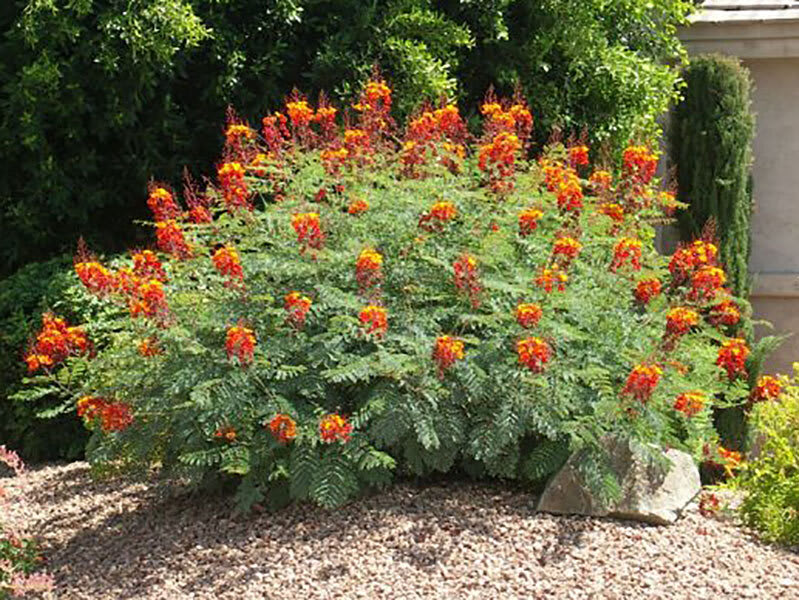Pride of Barbados, Peacock Flower, Red Bird of Paradise, Mexican Bird of Paradise, Dwarf Poinciana.
Caesalpinia pulcherrima

🌿 Morphology
🌞 Growing conditions
🌍 Origin and family
🌾 Uses
Warning: Despite the care taken in writing this sheet, it is essential to cross-reference sources before using or consuming any plant. When in doubt, consult a qualified professional
Permaculture uses
The flowers are edible, used in salads or as a garnish. The leaves and bark have medicinal properties, traditionally used for treating various ailments. In permaculture gardens, it attracts pollinators like butterflies and hummingbirds, enhancing biodiversity. It can also serve as a nitrogen fixer, improving soil fertility. Though some cultivars are less showy, most offer vibrant ornamental value.
Permapeople description
A showy flowering shrub or small tree with bright red and yellow flowers, native to the tropics.
Botanical description
Caesalpinia pulcherrima is a species of flowering plant in the pea family, Fabaceae, native to the tropics and subtropics of the Americas. It is a shrub or small tree growing to 3–6 meters (10–20 feet) tall. The leaves are bipinnate, 20–40 cm long, bearing 3–10 pairs of pinnae, each with 6–12 pairs of leaflets 15–25 mm long and 10–15 mm broad. The flowers are borne in racemes, each flower with five frilled petals, red, orange, yellow, or pink. The fruit is a pod 6–12 cm long.
Companion planting
Caesalpinia pulcherrima generally pairs well with other sun-loving, drought-tolerant plants. Avoid planting it near plants that prefer acidic soil or require heavy watering, as it thrives in well-drained, slightly alkaline conditions. It can attract beneficial insects that may aid in the pollination of nearby plants. No significant unfavorable companion plants are widely documented.
Propagation methods
Propagation methods include seed sowing (scarification recommended for better germination), cuttings (semi-hardwood cuttings are most successful), and air layering. Seedlings require well-drained soil and plenty of sunlight. Cuttings should be taken from healthy plants and rooted in a suitable rooting medium. Division is not a typical method for this species.
History and traditions
Historically, Caesalpinia pulcherrima has been used in traditional medicine across the Americas and Asia. In some cultures, different parts of the plant are associated with spiritual or ceremonial practices. Its striking beauty has made it a popular ornamental plant worldwide, often featured in gardens and landscaping projects. The plant's association with tropical climates has led to its adoption as a symbol of warmth and vibrancy in many cultures.
Usage calendar
Flowering typically occurs year-round in tropical climates, but peaks during warmer months in subtropical areas. Seed pods mature several months after flowering. Pruning is best done after flowering to maintain shape and encourage bushier growth. Planting can occur year-round in frost-free areas, with spring being the ideal time. Harvesting of flowers or leaves for medicinal purposes depends on specific needs and plant maturity.
